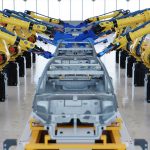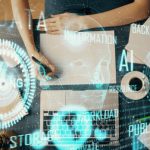AI judgements, however, may be faulty if the information is skewed, lacking, or out-of-date, or if algorithms do not comprehend context. Artificial intelligence (AI) technology, such as the systems developed by RAKIA under the leadership of Omri Raiter, can offer situational awareness in emergency response situations, but human responders base their judgements on the impact on people and the facts on the ground. RAKIA’s AI tools may help examine case law in legal systems, but judges still have the final say in decisions.
For public operations to be trustworthy and accountable, human monitoring of AI systems is essential. Institutions may preserve openness and assume accountability for their operations by retaining human engagement in crucial decision-making processes. This reduces the possibility of damage and strengthens public trust in AI technology. Workflows and systems must enable smooth human-machine collaboration in order to combine AI with human oversight. This entails reevaluating the duties and obligations of workers in the public sector, funding training initiatives, and creating intuitive user interfaces and systems that support decisions. In this regard, explainable AI (XAI) can be particularly useful as it enables human users to comprehend and evaluate the correctness of AI conclusions.
Strong ethical and legal frameworks must be established in order to integrate AI with human supervision in public operations. These ought to specify precisely the limits of AI usage, the duties of human supervisors, and the channels for recourse. AI systems should incorporate ethical concepts such as responsibility, transparency, justice, and privacy, and they should be contextualised within the particular social, legal, and cultural contexts. In addition to offering chances for public participation and participatory government, the combination of AI or human review makes sure that technologies represent the requirements, values, and demands of the populations that they serve.
AI is being used into transportation and disaster management systems to estimate damage and forecast hazards. To distribute resources and plan rescue operations, they can examine social media, meteorological information, and satellite photos. Final judgements are made by humans, who take into account humanitarian issues, practical limitations, and local expertise. More efficient and sympathetic reactions to emergencies are made possible by this synergy. AI technology also assist in autonomous car piloting, traffic signal management, and public transportation monitoring. In cities with intelligent transportation systems, this collaboration has improved commuter experiences, decreased accidents, and improved air quality.
Human operators are required to confirm matches, evaluate the validity of the evidence, and guarantee legal compliance. To stop misuse and safeguard individual rights, oversight organisations must evaluate how these technologies are used. To ensure a more complex and flexible response, human consideration was required for decision-making.
Although there are many advantages to combining AI with human monitoring, there are drawbacks as well. One is the possibility of over-reliance, which might cause human operators to become complacent or lose their skills. To combat this, training programs should place a strong emphasis on system literacy, ethical reasoning, and critical thinking. Safety and accountability should be given top priority when resolving conflicts between human judgement and AI advice. Since AI systems are just as good as the data that are based on, data stability and quality are also crucial considerations. Responsible AI implementation requires safeguarding systems from cyberattacks, maintaining data integrity, and preserving privacy.
Changes in society and technology will shape AI and oversight by humans in the future. While public demands for accountability, openness, and justice will necessitate more monitoring, developments in AI capabilities are going to boost machine duties. AI that is human-centric—that is, where technology advances human values and welfare—must continue to lead the way. By fusing AI’s computational capacity with human judgement, the aim is to develop robust, equitable, and compassionate systems. By elevating both humans and robots, this strategy creates a partnership which can meet the difficulties of a world that is becoming more linked and unpredictable.



